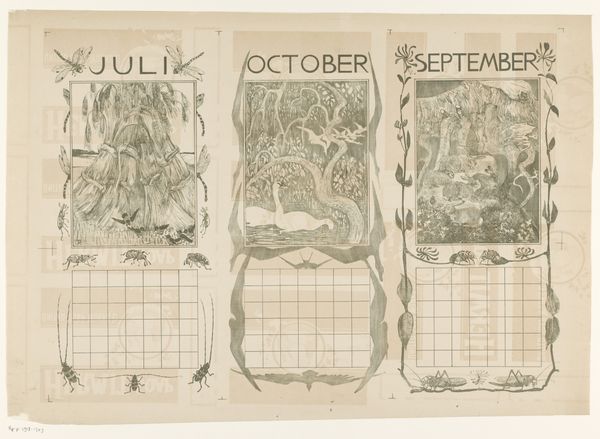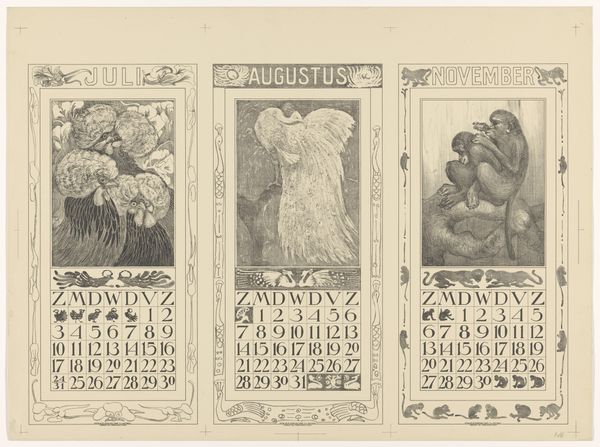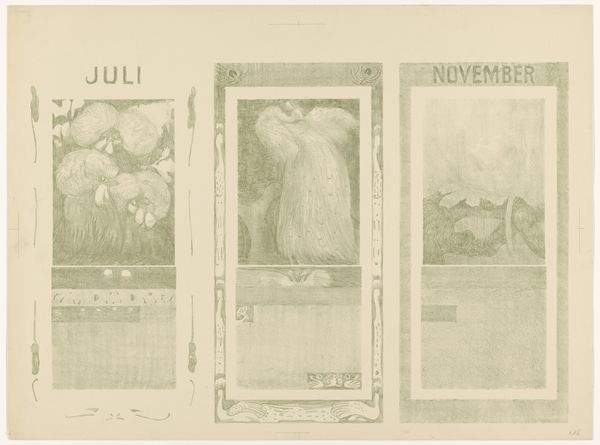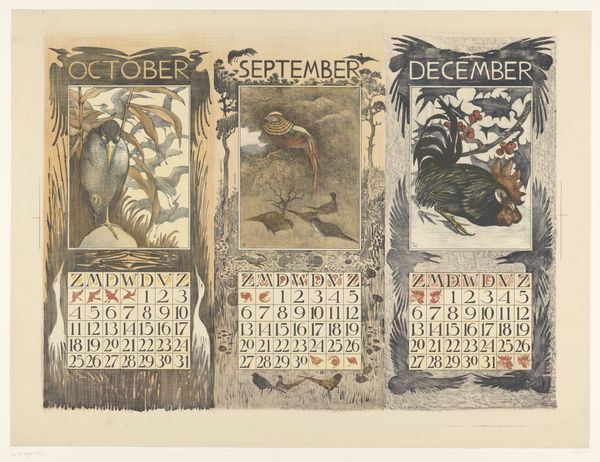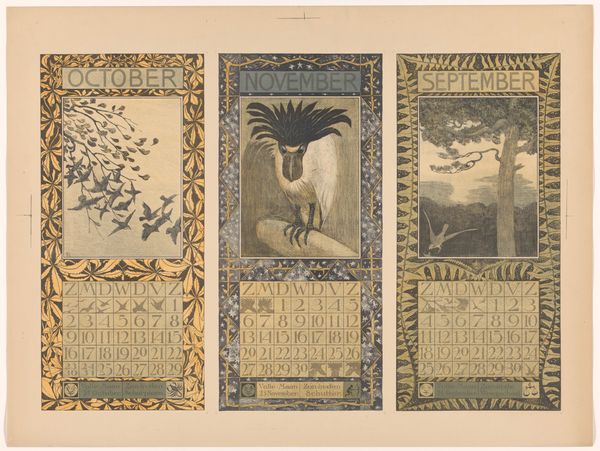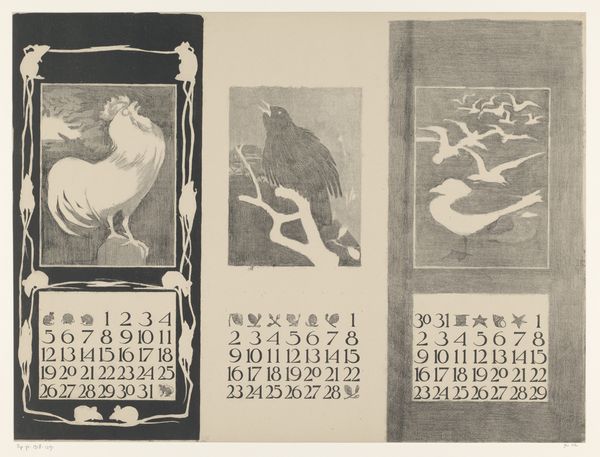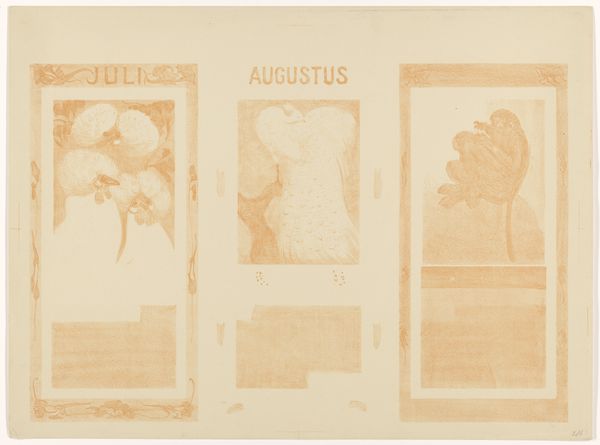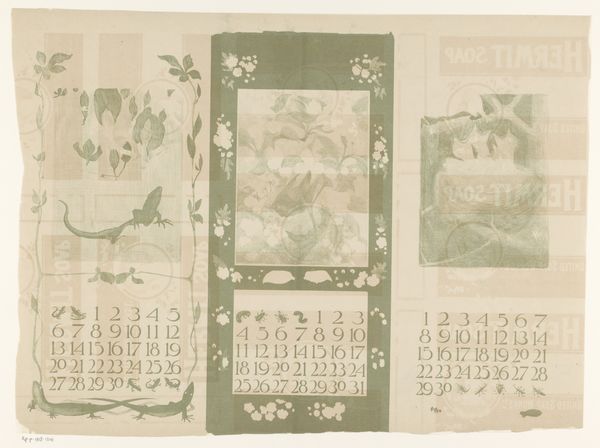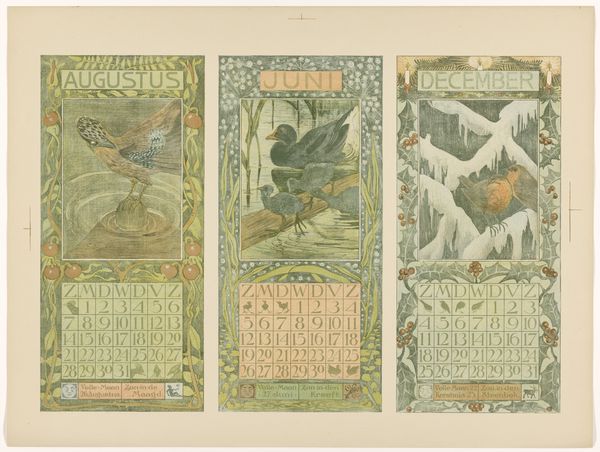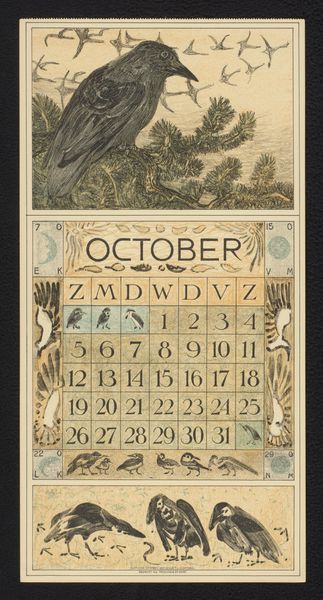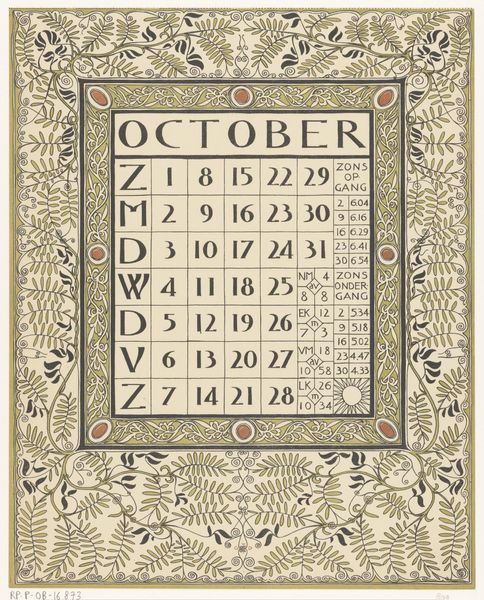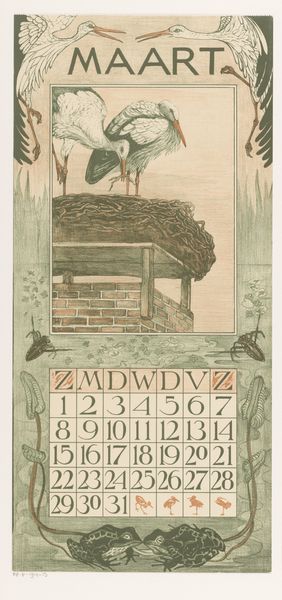
Kalenderbladen van juli, oktober en september, met korenschoven, zwanen en konijnen 1901
0:00
0:00
print, linocut
#
art-nouveau
# print
#
linocut
#
landscape
#
linocut print
#
plant
#
watercolour illustration
Dimensions: height 481 mm, width 640 mm
Copyright: Rijks Museum: Open Domain
Editor: This is Theo van Hoytema's "Kalenderbladen van juli, oktober en september, met korenschoven, zwanen en konijnen", a linocut print from 1901, currently held at the Rijksmuseum. I find the color palette of muted browns and yellows rather calming. What strikes you when you look at it? Curator: Immediately, I see a deliberate engagement with the aesthetics of labor and nature within the social context of the early 20th century. Hoytema's calendar doesn't just depict the months; it seems to frame them as lived experiences, intertwined with agrarian cycles and animal life. What does it suggest about humanity's place within nature, do you think? Editor: Well, the inclusion of the calendar dates suggests a very human ordering of time. Yet the prominence of animals and harvested crops in the decorative part also shows dependence on natural processes. A relationship, perhaps? Curator: Precisely! And consider the Art Nouveau style: the stylized flora and fauna speak to a desire to escape the industrializing world, seeking refuge in an idealized, pre-industrial vision of labor. How do you think the choice of linocut, as a printing method, reinforces or challenges this notion? Editor: The linocut's texture gives the image a handmade, almost craft-like feel, different from the sleekness of mass production that was increasingly common at the time. Curator: Exactly! So, we have a printed image referencing pre-industrial modes of production, and calendar forms reminding us of the order of the agricultural system of life...a dialogue of humanity and the natural order is shown in these cultural, visual relationships. Editor: I hadn't considered how all these elements work together to communicate a broader socio-political statement. Thanks for pointing it out. Curator: Of course. Art helps us examine ourselves. I feel like my perspective has been enriched as well.
Comments
No comments
Be the first to comment and join the conversation on the ultimate creative platform.
